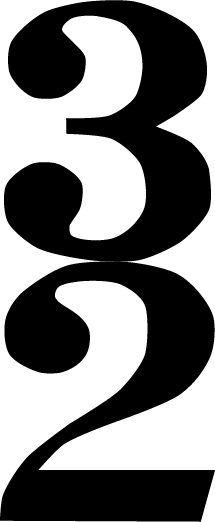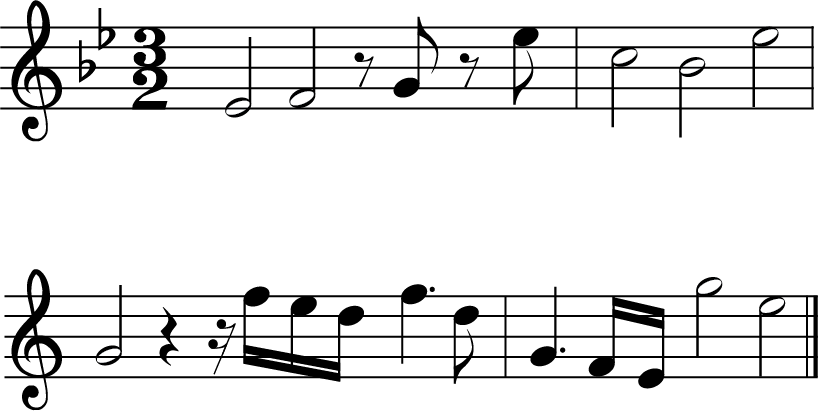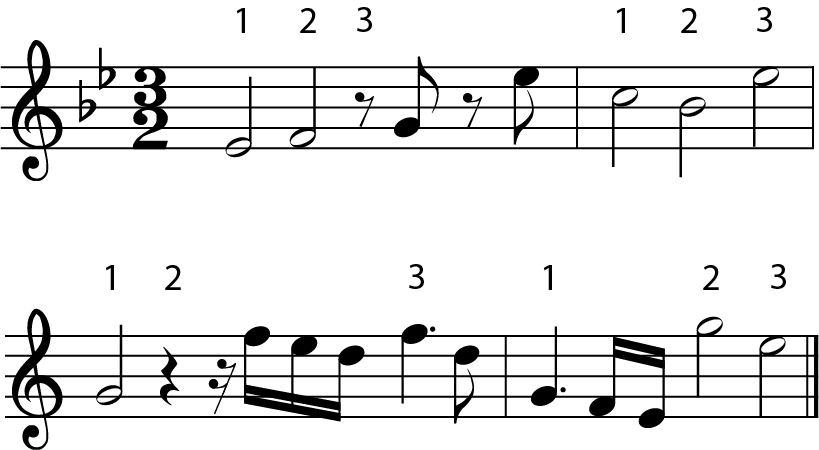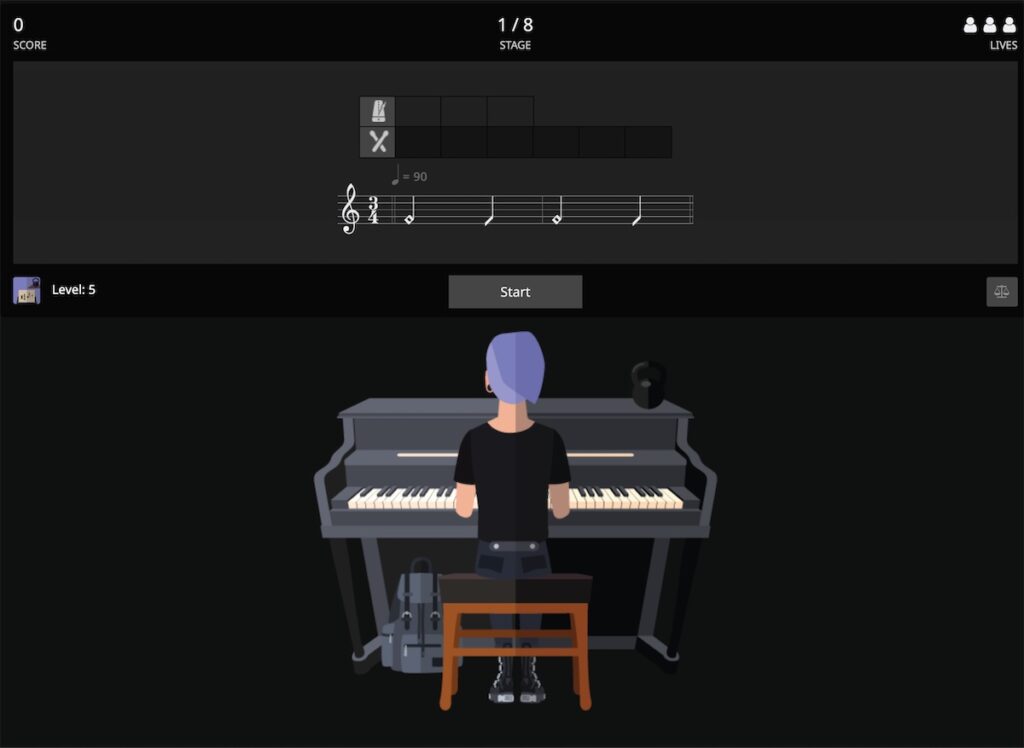The time signature 3/2 is a well known meter in classical music, and it’s occasionally used in popular music. 3/2 contains measures (or bars) that have 3 half-note beats (minims). Music in 3/2 time is often associated with slower pieces with a three count.
We’re going to dive straight into 3/2 time, but you can find more info on what a time signature is in our complete guide to meters.
What is Time Signature 3/2?
The time signature or meter of 3/2 is shown in the music as a 3 above a 2.

This comes before the music starts but after the clef and key signature. The ‘3’ stands for 3 beats per measure and the ‘2’ tells us that each beat is a half note (minim). This means that the notes in each measure will add up to 3 half notes.
See if you can spot the three half note beats in this line of music.

Now here it is with the beats labelled.

How to count in 3/2
3/2, like all meters, has a distinctive feel to it. The piece below contains more complex rhythms with a variety of note lengths. However, it would still be counted in three half-note beats.
We count 3/2 as 1…&…2…&…3…&… Can you spot where each beat falls?

Now here it is with the beats added in.

3/2 is a Simple, Triple Time Signature
There are three broad types of time signature: simple, compound and irregular. Simple time signatures have strong beats that divide into two. Compound time signatures have strong beats that divide into three and irregular time signatures have a mixture of beats.
In 3/2, each beat is a half note (minim) and therefore can be divided into TWO quarter notes (crotchets). This makes 3/2 a Simple Time Signature. It is a Triple time signature because there are THREE half-note beats in each measure. To learn more about the differences check out our ultimate guide to time signatures.
The notes below show how each half-note beat in 3/2 time can be divided into two quarter notes (crotchets).

Songs with a 3/2 Time Signature
Handel – Sarabande
Bach – Prelude if Eb minor (BWV 853)
Ear Training and Meters
To develop as a musician you’ll want to be able to recognise time signatures by ear. This is where ear training comes in, as the more you practice, the better your’ll get.
My recommendation for this is Tonegym as they have a comprehensive and fun program for training your ears. It’s what has gotten the best results with for my own students.
They have a great game called ‘Rhythmania’, were you have to read rhythms in different meters and tap them back using the spacebar. I like how Tonegym structure the game so it always gives you the right level of challenge.
For an in-depth look at ear training, here’s my full review of Tonegym.

What’s the difference between 3/2 and 3/4?
3/2 time has three half-note beats per measure and is counted as 1…&…2…&…3…&… 3/4 also has three strong beats per measure, but these are quarter notes. 3/4 time has three quarter notes per measure.
So when would we use 3/2 and when would we use 3/4? Roughly speaking, we use 3/2 for slower pieces and 3/4 for slightly quicker pieces. Now this is not a strict rule, but it holds for most classical music. In the end, it is up to composers how they want to notate their music.

What next…?
- If you want to learn more about time signatures, check out our complete guide to meters.
- You can also learn about any time signature with our individual meter guide.
